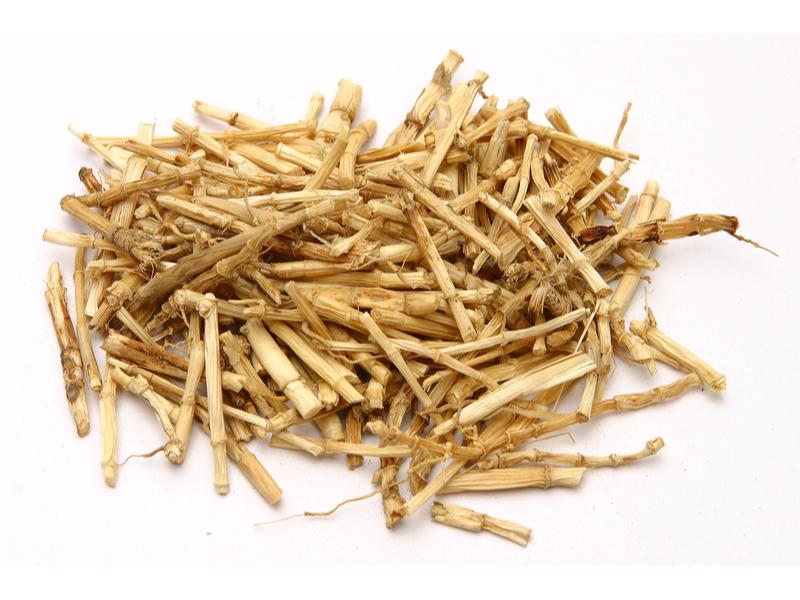Search in medicinals
Imperatae Rhizoma
Imperata [rhizome]
白茅根 〔白茅根〕 bái máo gēn

Alternate English names: cogon [root] lalang [root]
Alternate Chinese names: 兰根 lán gēn; 地管 dì guǎn; 白花茅根 bái huā máo gēn; 茅草根 máo cǎo gēn; 丝茅草根 sī máo cǎo gēn; 白茅 bái máo; 茅根 máo gēn
Kingdom: Plant
Origin in PRC Pharmacopoeia: Imperata cylindrica Beauv. var. major (Nees) C. E. Hubb. (PRC Pharmacopoeia)
Origin in unofficial sources: Imperata cylindrica (L.) P. Beauv. var. major (Nees) C.E. Hubb.
Use: Medicinal
Category: Blood-stanching agents / Blood-cooling blood-stanching agents
Properties: Sweet; cold.
Channel entry: Lung, stomach, and bladder channels.
Actions and indications:
- Cools the blood and stanches bleeding: Bleeding due to frenetic movement of hot blood, manifesting in coughing of blood, vomiting of blood (blood ejection), nosebleed, or bloody urine.
- Clears heat and disinhibits urine: Heat strangury, water swelling.
- Additional applications: Bái máo gēn clears and drains
lung-stomach heat . It is therefore used to treat vexation and thirst, vomiting from stomach heat, and lung heat cough when occurring in febrile disease. For this purpose, it is often combined with Lú gēn (芦根 Phragmitis Rhizoma, phragmites [root]).
Dosage and method: Oral: Decoct (9–15g fresh, 30–60g dried) or grind to powder. The fresh form is used to clear heat, cool the blood, and disinhibit urine. Used charred for stronger blood-stanching and astringent action.
Warnings: Use with care in spleen-stomach vacuity cold.
Product description: This is a long thin cylindrical rhizome that sometimes has branches. It varies in length and is 2–4 mm thick. It has nodes, at which there are scaly leaf sheaths and fine roots or their remains. The outer surface is pale yellow and has longitudinal wrinkles. The decocting pieces are sections 2–5 mm long, which are pale yellow on the cut edge.
Quality: Thick, dry, sparsely noded, pure white rhizomes without fibrous roots are the best.
Production area: Héběi, Jiāngxī.
Etymology: The English cogon comes from the Spanish cogón, which in turn derives from kugon of the Philippino languages Tagalog, Bisayan, and Bikol.
Back to search result Previous Next